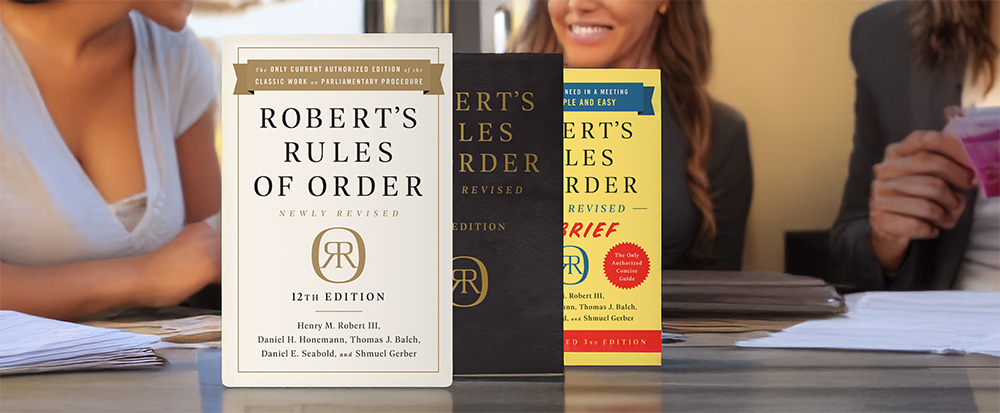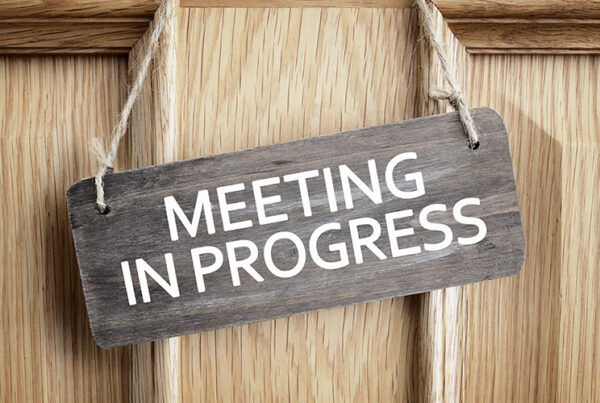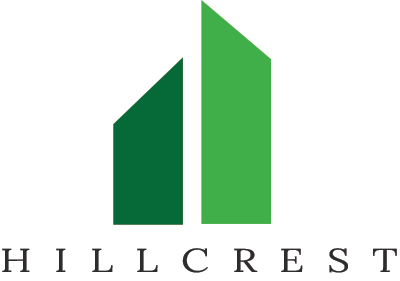Meetings can easily become disorganized without clear procedures, which is where Roberts Order of Rules comes in. Using Robert’s Rules will help ensure everyone is heard and that decisions follow a fair process. Navigating the ins and outs of these rules can come as a challenge, which is why this guide simplifies it for associations.
What are Roberts Order of Rules?

Robert’s Rules of Order is a guidebook created to help groups run meetings efficiently and fairly.
It dates back to the 1870s and remains the standard for many associations and boards today. The purpose is to offer a consistent format that prevents confusion, encourages participation, and keeps discussions on track.
Organizations such as homeowners associations, school boards, city councils, and nonprofit committees rely on these rules. They provide a roadmap for how to make motions, vote, and manage debates. The rules protect both majority power and minority voice. They also offer a way to resolve disputes without unnecessary conflict.
At its core, Robert’s Rules is about fairness and order. It does not aim to silence anyone. Instead, it gives each person a clear opportunity to contribute. Every group member, from a new homeowner to the board president, can speak or raise concerns in a structured setting.
Core Principles of Roberts Rules of Order
Several core principles support how Roberts Order of Rules work. These principles are easy to understand and help guide every meeting, no matter the group size.
- Majority Rule. The group follows the will of the majority when making decisions. Voting ensures fairness while allowing the group to move forward.
- Minority Rights. Even if the majority decides, the minority always has the right to speak, propose ideas, and express concerns.
- Equal Opportunity. Every member has the same right to speak and participate. No one gets special treatment.
- One Thing at a Time. The group discusses only one subject or motion at a time. This prevents confusion and keeps meetings focused.
These principles work best when the chair follows them consistently. When applied properly, they create an environment that respects both time and people.
Basic Meeting Structure Under Robert’s Rules
The standard meeting agenda helps keep everything organized. This structure keeps the group focused and helps attendees know what to expect. It also makes it easier for secretaries to take accurate notes. Roberts Order of Rules suggests a simple and familiar structure, listed below.
Call to Order
The chair officially opens the meeting and confirms that a quorum is present. A quorum is the minimum number of members needed to make decisions.
Roll Call (If Applicable)
In some boards, especially formal ones, a roll call records who is present. This helps keep accurate minutes.
Approval of Minutes
This is when the board and members review the minutes from the last meeting. The board corrects any errors before approving the minutes.
Reports
Officers, committees, or property managers give updates. These reports inform members about the association’s status and upcoming tasks.
Unfinished Business
This is when the board addresses old topics that were previously unresolved. This ensures that the board does not leave behind any important subject.
New Business
Members introduce new topics or proposals. The board handles each item one at a time, using motions and votes as necessary.
Adjournment
After covering all topics, the chair calls for a motion to end the meeting.
Common Motions in Robert’s Rules and How to Use Them
Motions are the heart of any meeting run under Robert’s Rules. A motion is how a member proposes an action. Here are some of the most common ones.
Main Motion
This starts the process. A member says, “I move that we…” followed by the proposal. Another member must “second” the motion to show support. Once seconded, the group discusses it before voting.
Amendment
A member may want to change part of a motion. They can propose an amendment, such as adding a deadline or rewording a sentence. The amendment also needs a second. The group discusses and votes on the amendment first, then on the main motion.
Point of Order
If someone believes the rules are not being followed, they can raise a point of order. The chair then makes a ruling to clarify the rule in question.
Motion to Table
This postpones discussion on a topic. It is usually helpful if more research is necessary. The group can then revisit the issue later.
Motion to Adjourn
A member may move to end the meeting after the completion of business. There usually isn’t a debate for this motion.
Seconding a Motion
A second shows that at least two people find the proposal worth discussing. If no one seconds, the motion dies without debate.
Voting and Debate Rules
Each member may speak for or against a motion. The chair keeps order and limits repetition. Once the discussion ends, the group votes.
Roberts Rules of Order Simplified
Small associations may not need every formal rule. Still, they can benefit from a simplified version. Here is every board’s Roberts Rules of order cheat sheet.
- Use a Consent Agenda. Combine routine items such as approval of minutes or financial reports into one motion. This saves time and speeds up the meeting.
- Agree on Time Limits. Set time limits for discussion. For example, allow two minutes per speaker and 15 minutes per topic. This avoids long speeches and keeps the meeting on track.
- Allow Informal Discussion Before a Motion. Before making a formal motion, let members discuss the topic briefly. This helps refine ideas and reduce confusion.
Mistakes to Avoid When Using Roberts Order of Rules
Even well-meaning boards can run into trouble when applying Robert’s Rules. Here are common mistakes and how to avoid them.
- Letting One Person Dominate. Every member should have a turn to speak. The chair should rotate speakers and prevent interruptions.
- Skipping Motions or Seconding. Always follow the full motion process. Skipping these steps leads to confusion and unfair decisions.
- Voting Without Clarity on the Motion. Before voting, the chair should restate the motion clearly. This ensures everyone knows what they are voting on.
- Ignoring Member Rights. Do not rush through the discussion. Every member has the right to ask questions or propose changes.
- Failing to Record Decisions. Secretaries should record each motion, who made it, and whether it passed. This creates a clear record of actions.
Robert’s Rules of Order for Meetings
Roberts Order of Rules does not have to feel complicated or overwhelming. By understanding the basics and applying simplified procedures, HOA boards and other small groups can run better meetings.
Hillcrest offers HOA management services to communities in Chicago. Call us today at 630-627-3303 or contact us online to request a proposal!
RELATED ARTICLES:
- What Is The Open Meeting Act in HOAs?
- HOA Meeting: What Goes On From Start To Finish
- HOA Meeting Protocol: A Proper Structure For Meetings





